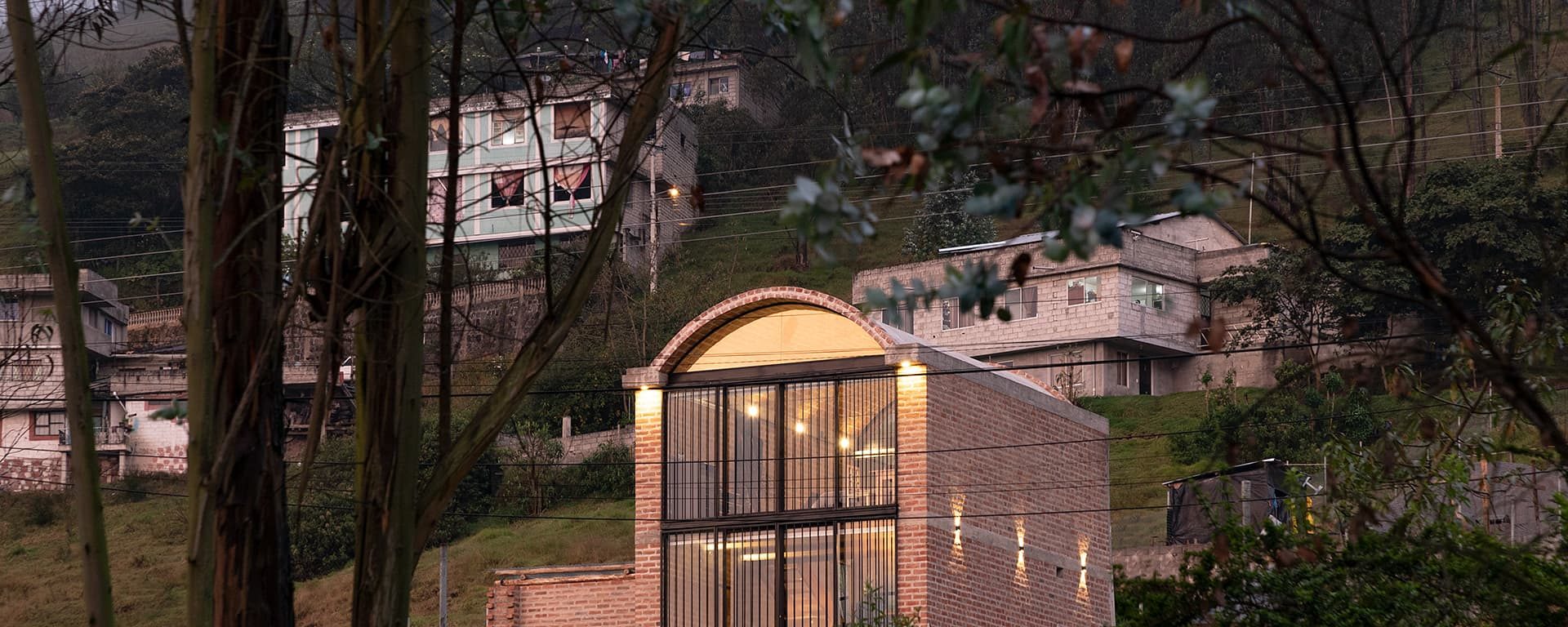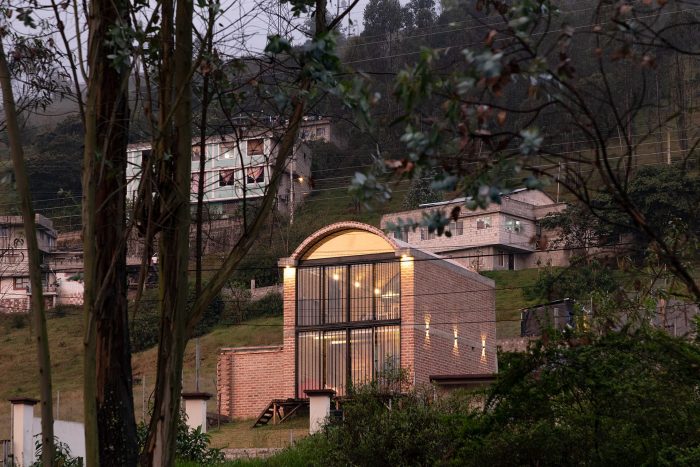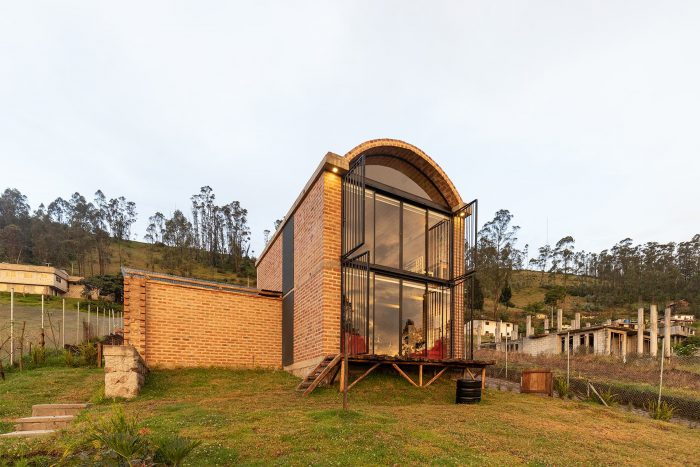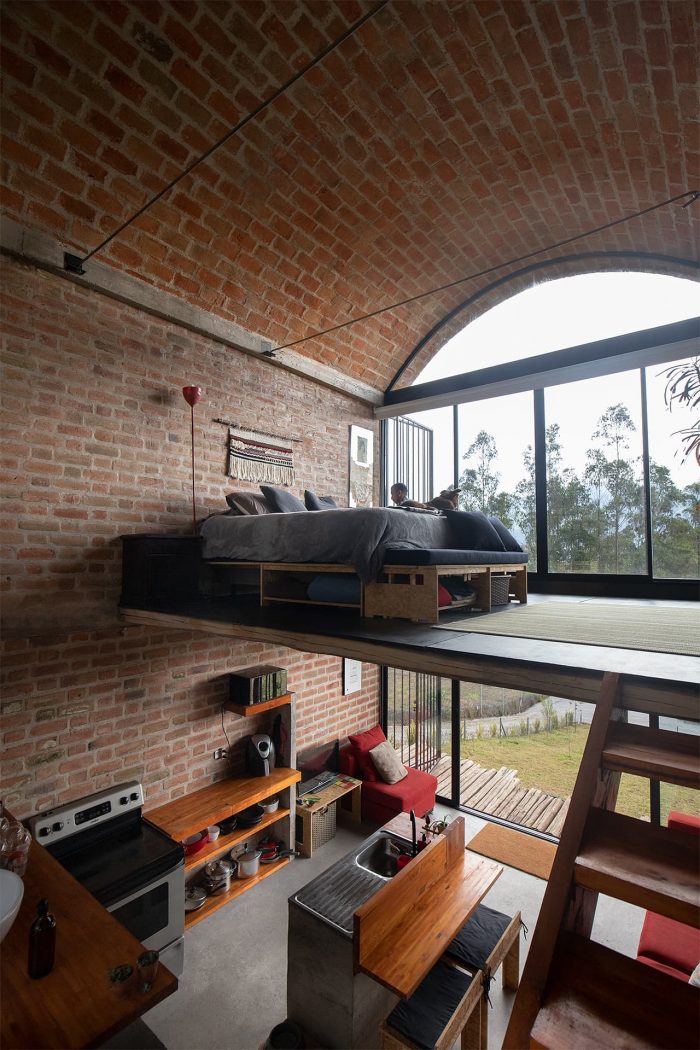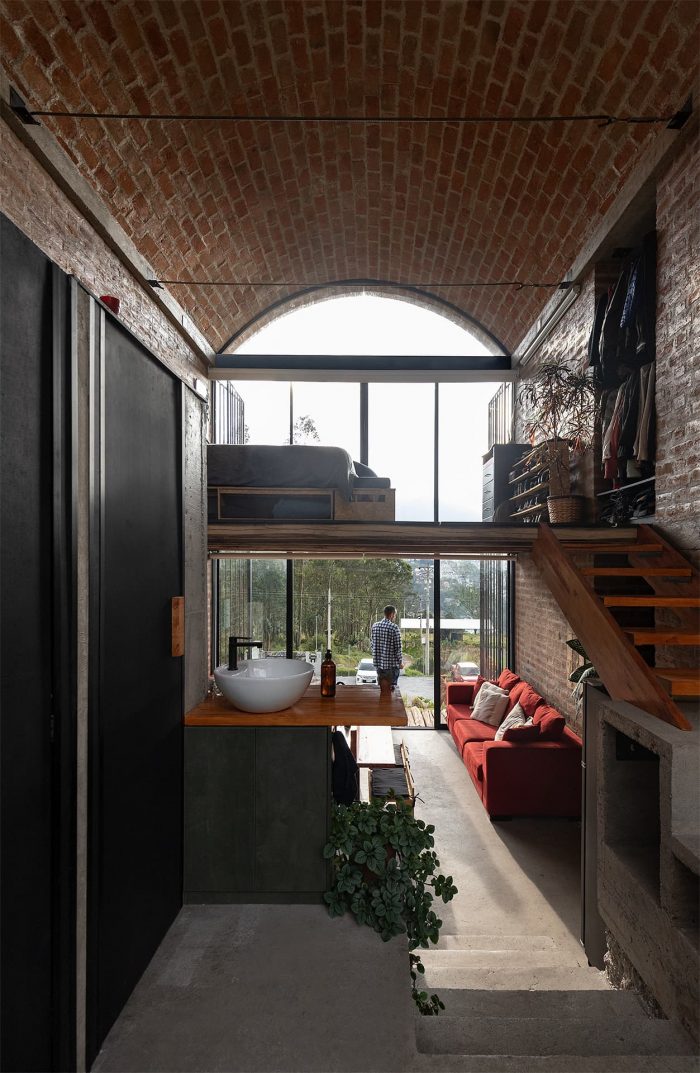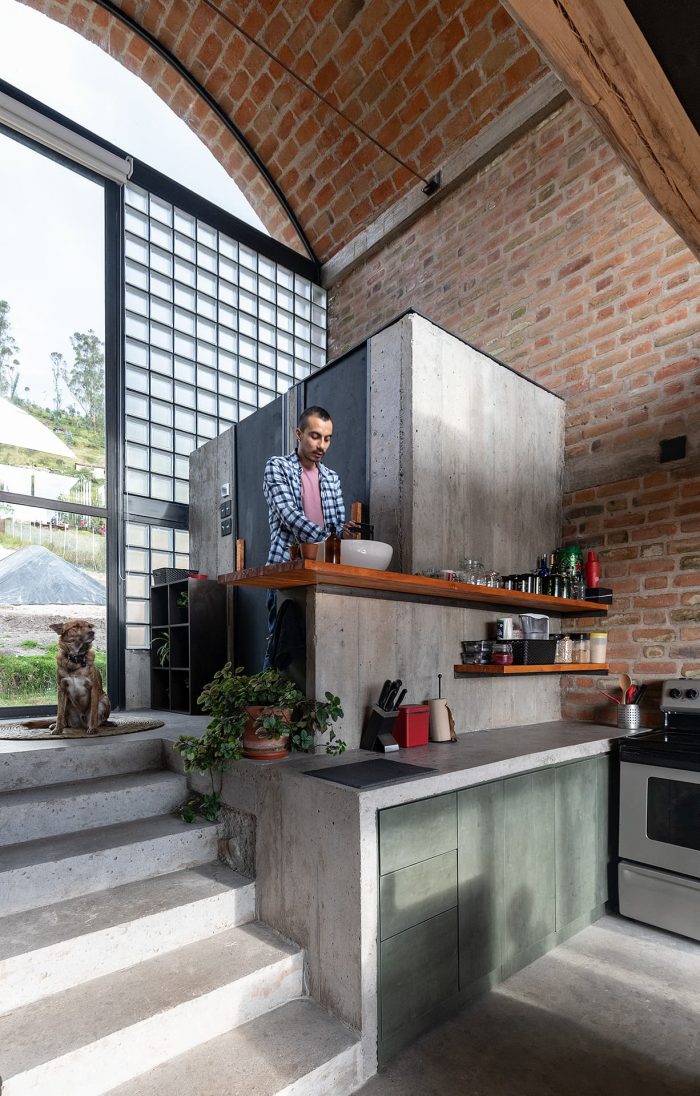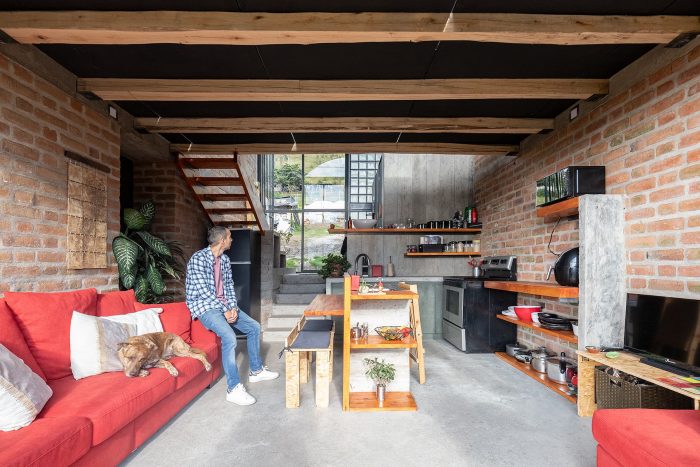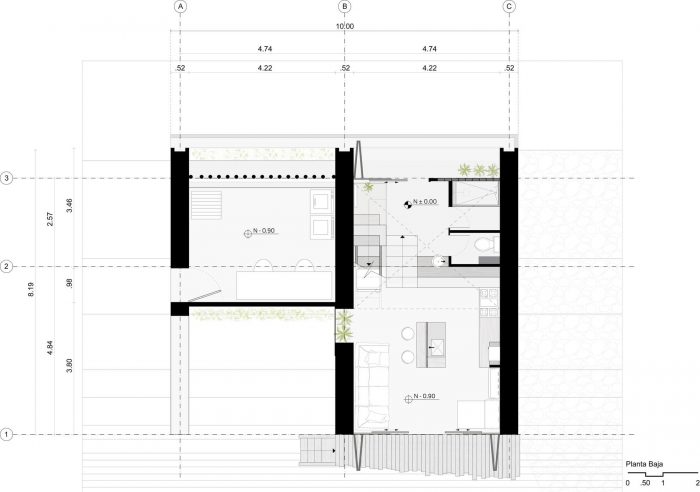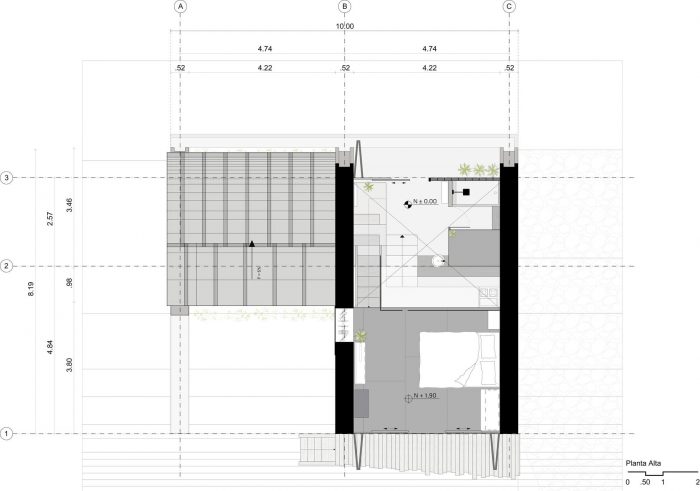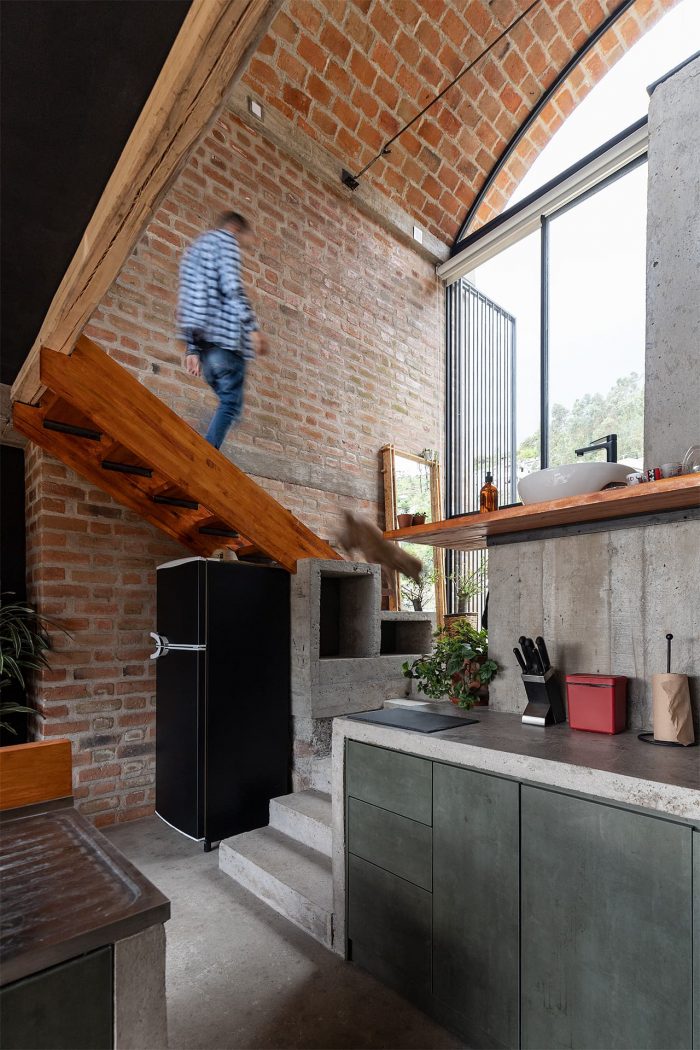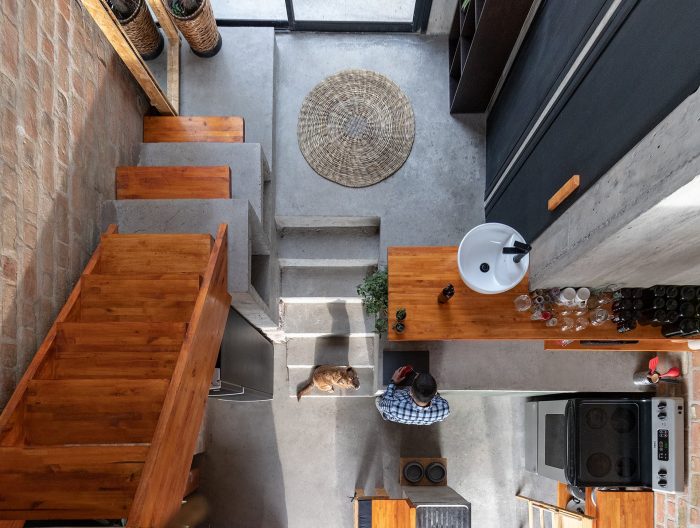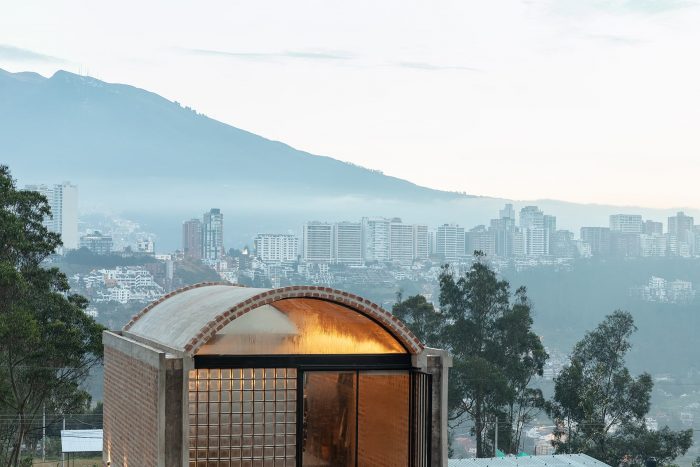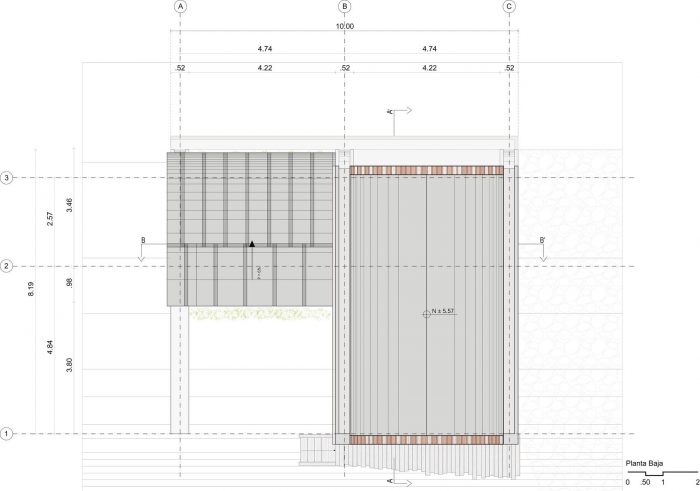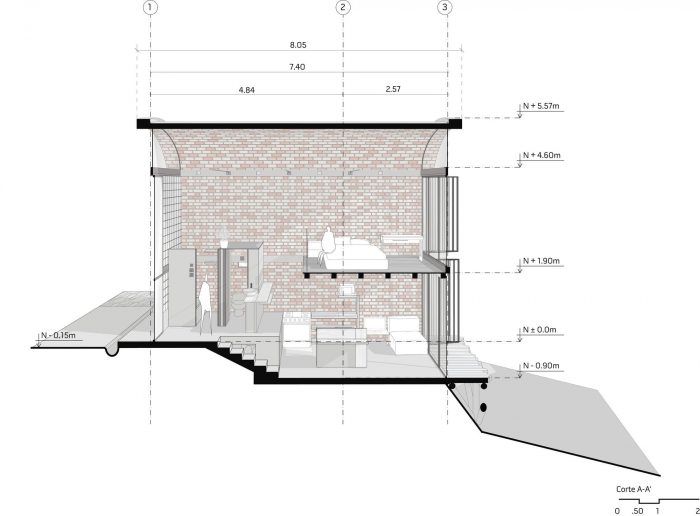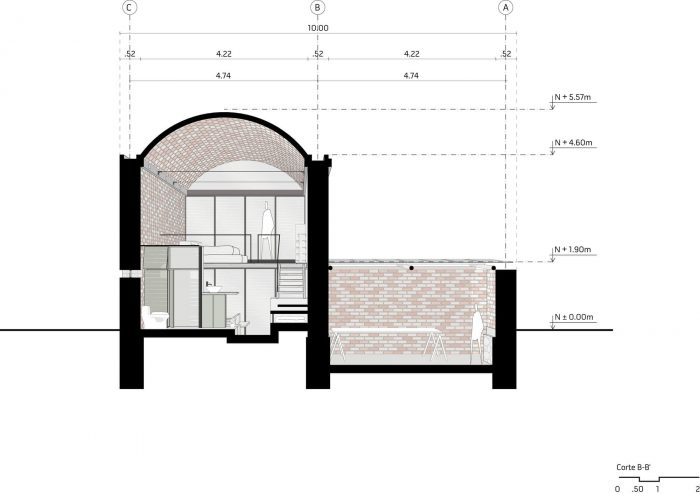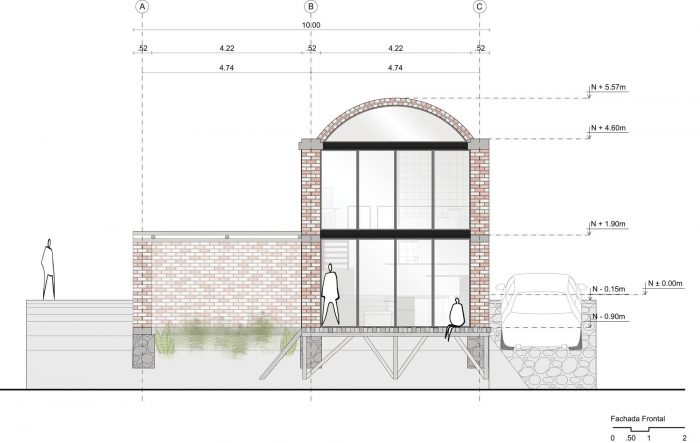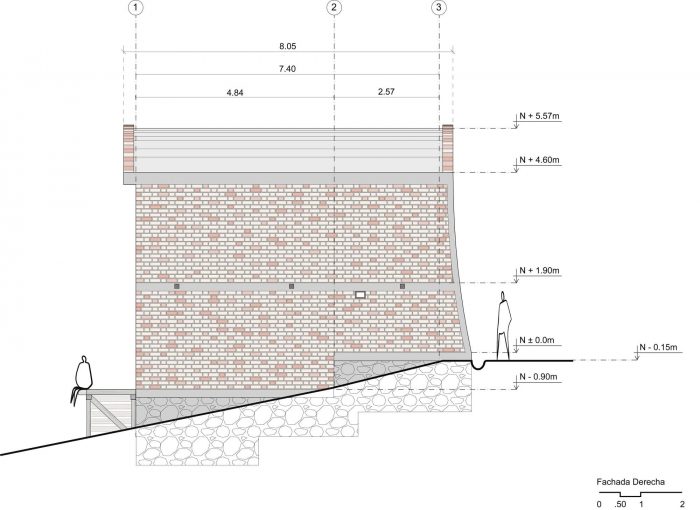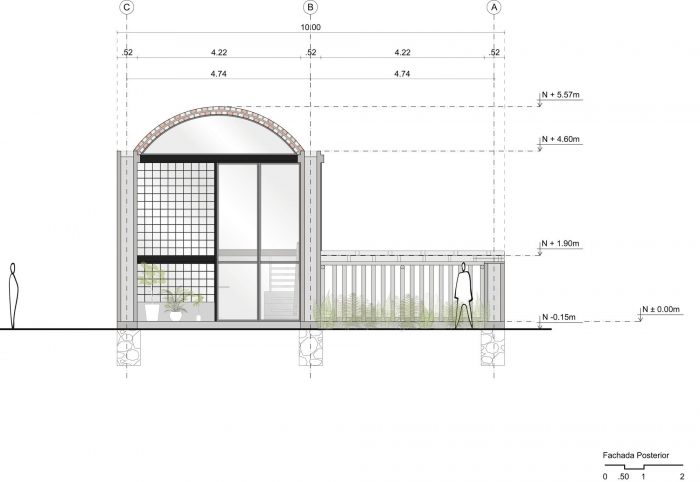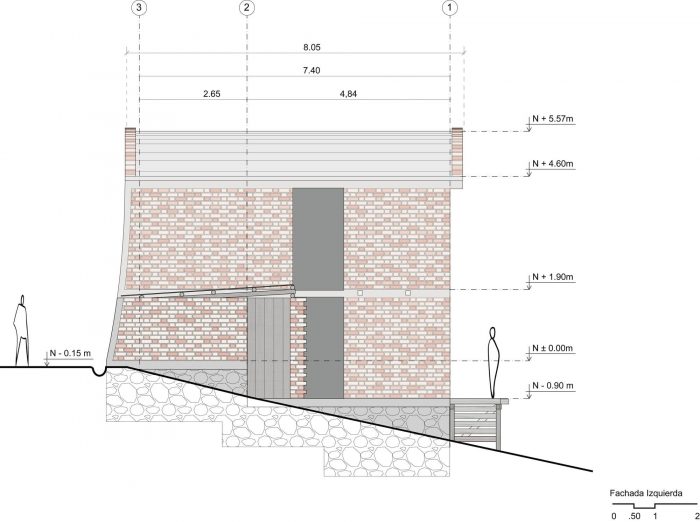场地。在城市的郊区,在一个山地地形,远而近。我们位于Auqui山上,是与基多市接壤的山坡之一。这个地方与城市隔着一条河。然而,从这里到市中心有20分钟的车程。
The site. On the outskirts of the city, in a mountainous topography, far, yet close. We are located on the hill Auqui, one of the slopes that border the city of Quito. This location is separated from the city by a river. However, it is a 20-minute drive to downtown.
尽管该地点靠近城市,但仍保留了农村的特点。但是,它仍然与城市保持着重要的视觉关系,使项目的定位很明显。
The site, despite its proximity to the city, retains a rural character. Still, it maintains an important visual relationship with the city, making the orientation of the project evident.
该地块坡度适中,周围自然环境多样:桉树、松树、果园和动物。出于这个原因,该项目位于面向视觉的位置,并通过一组水平线与不平整的地形相连接。
The lot has a medium slope and diverse nature in its surroundings: eucalyptus trees, pines, orchards, and animals. For this reason, the project is located facing the visuals and connecting to the uneven topography through a set of levels.
材料强度。由于其高热惯性,砖被选为项目的推动者。这允许解决项目内部的热舒适性,尽管外面的温度变化。
Material strength. Brick was chosen as the enabler of the project due to its high thermal inertia. This allows solving the thermal comfort inside the project despite the variations of the temperature outside.
此外,材料的结构能力得到了利用,充分解决了项目的要求。在这种方法的帮助下,垂直和水平限制、结构和屋顶都得到了解决。纵向元素用宽大的承重砖墙来解决,它为内部的热舒适性提供了质量。屋顶采用了一个较低的拱顶,这种几何形状允许用砖来解决水平元素。但是,由于该项目位于地震区,拱顶用3厘米厚的钢筋混凝土层加固,获得了一个大面积的轻型覆盖物。这种建筑体系使得项目中混凝土和钢材的使用降到最低。
Additionally, the structural capabilities of the material are taken advantage of, fully solving the requirements of the project. The vertical and horizontal limits, the structure, and the roof are solved with the help of this approach. The vertical elements are resolved with wide load-bearing brick walls, which provide mass for thermal comfort inside. A lowered vault is used for the roof, a geometry that allows a horizontal element to be solved with brick. But, since the project is located in a seismic zone, the vault is reinforced with a 3cm-thick reinforced concrete layer, obtaining a light cover with a large surface area. This construction system made it possible to minimize the use of concrete and steel in the project.
栖息地,一个大的面包炉。这座房子必须是舒适的,惬意的,最小的(48平方米),因为它有两个未来的建设阶段。它们将为新的用途提供空间。
The habitat, a big bread oven. The house must be cozy, comfortable, and minimal (48m2) since it has two future stages of construction. They will provide spaces for new uses.
建筑系统的结果是一个均匀的围护结构,提供了干预的自由和对内部空间的占有。
The construction system results in a homogeneous envelope that provides freedom of intervention and appropriation of the interior space.
三个内部楼层允许空间的分布:入口/浴室,客厅/餐厅/厨房,以及卧室/书房,与城市和乡村的景色保持直接关系。
The three interior levels allow the distribution of spaces: the entrance/bathroom, the living room/dining room/kitchen, and the bedroom/study, maintaining a direct relationship with the views of the city and the countryside.
通过这种方式,建筑被解决为一个大型的面包炉,它坐落在山上,根据使用的区域进行照明。
In this way, the architecture is resolved as a large bread oven that sits on the mountain and is lit according to the area that is used.
Architects: ERDC Arquitectos, Taller general
Area : 48 m²
Year : 2022
Arquitects : Martín Real, Florencia Sobrero, Fernanda Esquetini, Pablo Puente
Collaborator : Santiago León
Engineering : Patricio Cevallos
Construction : Taller general
City : Quito
Country : Ecuador

